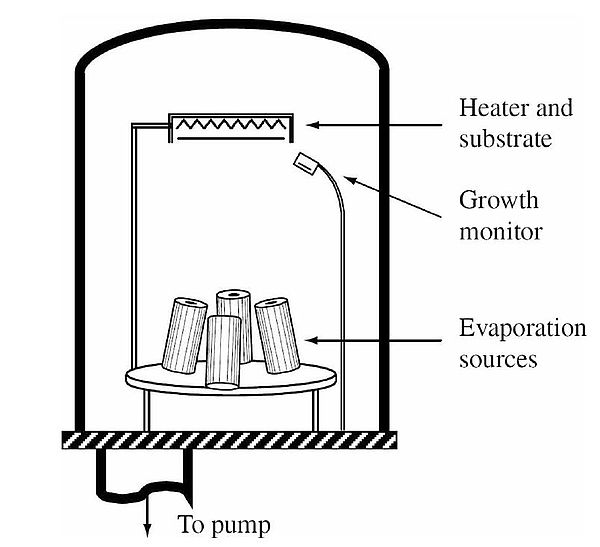Combination of different photocatalytic nanostructures and materials for the design of photocatalytic cells for improved photoelectrochemical and autonomous water splitting
CuGaSe2 and related compounds as photocathodes for photoelectrochemical water splitting
Semiconductor materials from the class of “Copper Indium Gallium Sulfur Selenium (CIGSSe)” with different compositions, also known as chalcopyrites, have a broad range of band gaps between Eg = 1.00 eV to Eg = 2.43, as illustrated in Figure 1 [1]. For instance, increasing the gallium content in Cu(Inx,Ga1-x)Se2 changes the band gap from 1.00 eV (CuInSe2 with x = 0) to 1.68eV (CuGaSe2 with x = 1). To further increase the band gap of CuGaSe2, several sulfurization techniques have been examined for the formation of CuGaS2 with Eg = 2.43 eV [2].

In photovoltaics, wide-bandgap p-type CuGaSe2 is one of the most promising candidates as the top cell for the preparation of tandem solar cells. However, there are only a few investigations into the application of this material as a photocathode for photoelectrochemical water splitting. Due to its relatively large bandgap of 1.68 eV, the combination of a CuGaSe2 film with a layer of CIGS with a smaller band gap, not only covers nearly the entire solar spectrum, but would also make it possible to generate a sufficiently large photovoltage for running both half reactions involved in the water splitting process.
In this project, we started by depositing various compositions of CuGaxSey films (based on different Cu/Ga atomic ratios) on Mo-coated Soda–lime glass by the so-called single-stage co-evaporation process shown in Figure 2 [3]. These atomic ratios ranged from nearly stoichiometric CuGaSe2 to extremely Cu-poor CuGa3Se5, which can be regarded as the ordered vacancy compound (OVC). With a saturated photocurrent density of ~20 mA/cm2 for CuGaSe2, the PEC performance of all different CuGaxSey compositions were outstanding in comparison to a previous report in the literature [4]. Current research efforts are focused on an in-depth investigation into the PEC properties of these materials and on further improvement of their performance.

[1] M. Bär, W. Bohne, J. Röhrich, E. Strub, S. Lindner, M. C. Lux-Steiner, Ch.-H. Fischer ''Determination of the band gap depth profile of the penternary Cu(In(1?X)GaX)(SYSe(1?Y))2 chalcopyrite from its composition gradient'', Journal of Applied Physics 96, 3857 (2004)
[2] Alexander D. DeAngelis, Kimberly Horsley, and Nicolas Gaillard, "Wide Band Gap CuGa(S,Se)2 Thin Films on Transparent Conductive Fluorinated Tin Oxide Substrates as Photocathode Candidates for Tandem Water Splitting Devices", J. Phys. Chem. C, 2018, 122 (26), 14304–14312
[3] Sreekanth Mandati, Prashant Misra, Bulusu V. Sarada, Tata Narasinga Rao "Copper Chalcopyrites for Solar Energy Applications", Transactions of the Indian Institute of Metals, 2019, Volume 72, 271–288
[4] Christopher P. Muzzillo, W. Ellis Klein, Zhen Li, Alexander Daniel DeAngelis, Kimberly Horsley, Kai Zhu, Nicolas Gaillard'' Low-Cost, Efficient, and Durable H2 Production by Photoelectrochemical Water Splitting with CuGa3Se5 Photocathode'', ACS Appl. Mater. Interfaces 2018, 10, 19573?19579




